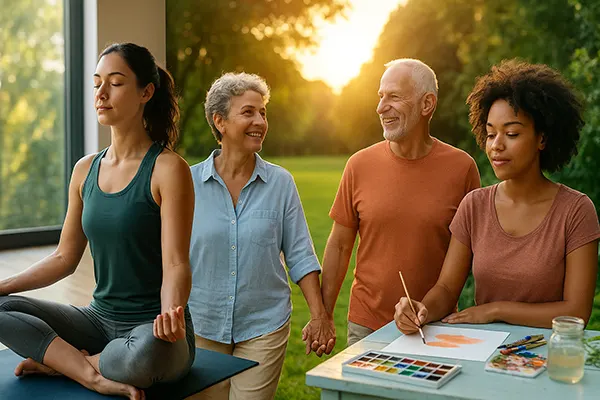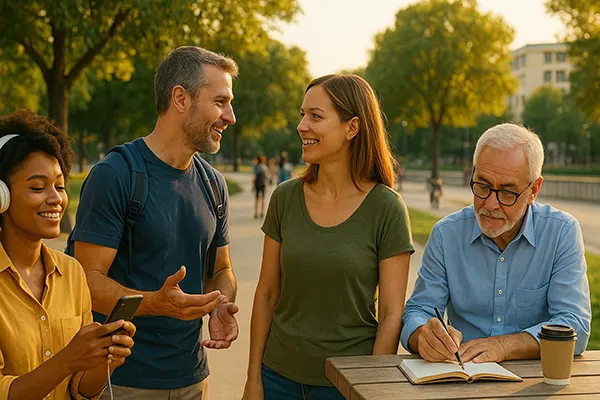
Mindful Rest Skills: From Passive to Active Relaxation
In today’s fast-paced world, rest is often misunderstood as mere inactivity. However, true rest goes far beyond simply lying on the sofa or scrolling through a phone. Developing mindful rest skills allows people to restore energy in ways that support both physical health and mental clarity. By distinguishing between passive and active relaxation, and learning how to integrate conscious practices into daily life, it becomes possible to achieve more balanced recovery and resilience.
Understanding Passive and Active Relaxation
Passive relaxation typically involves activities that require little physical or mental effort. Sleeping, watching television, or browsing social media can help the body switch off for a time, but they do not always provide deep restoration. While such rest has value, especially when the body is overtired, relying solely on passive rest can leave people feeling sluggish or unmotivated.
In contrast, active relaxation refers to engaging in activities that are calm and restorative yet require gentle participation. Practices like yoga, tai chi, creative hobbies, or gardening involve both body and mind in a way that promotes recovery without overexertion. These activities stimulate circulation, reduce stress hormones, and provide a sense of fulfilment.
By recognising the difference between passive and active forms of rest, individuals can make more conscious choices about how to restore their energy. This understanding helps avoid overdependence on screen-based downtime and encourages healthier routines that enhance long-term wellbeing.
Examples of Active Relaxation Practices
Yoga and stretching are well-known forms of active relaxation, as they combine gentle movement with breath control. These practices help release tension in muscles, improve flexibility, and calm the nervous system. Regular sessions contribute to better sleep quality and lower levels of anxiety.
Leisure walks, particularly in natural surroundings, are another effective method. Walking at a slow pace while focusing on the environment allows the mind to settle and provides the body with light, beneficial exercise. Such mindful walks are increasingly recommended by healthcare professionals as part of stress management.
Creative activities, such as painting, writing, or playing music, can also function as active relaxation. They engage the brain in a positive and absorbing way, creating a flow state that encourages mental recovery and emotional balance.
The Role of Nature and Social Interaction
Connection with nature is one of the most powerful ways to enhance relaxation. Research shows that spending time outdoors reduces cortisol levels, improves mood, and supports cardiovascular health. Even short breaks in green spaces can have lasting effects on wellbeing.
Equally important is the role of social interaction in mindful rest. Sharing relaxing activities with friends or family strengthens bonds, reduces feelings of isolation, and creates a sense of belonging. Social rest is particularly vital in a world where many people spend long hours in solitary digital environments.
Combining time in nature with companionship, such as gardening with family members or hiking with friends, provides multiple layers of restoration. These experiences combine physical activity, fresh air, and emotional support, leading to more sustainable relaxation outcomes.
Breathing Practices and Nutrition
Breathing exercises are a simple yet powerful tool for relaxation. Techniques such as diaphragmatic breathing, box breathing, or alternate nostril breathing activate the parasympathetic nervous system, lowering heart rate and promoting calmness. They can be used anytime, making them highly practical for managing daily stress.
Nutrition also plays a key role in relaxation. A balanced diet rich in whole foods, lean proteins, and omega-3 fatty acids supports brain function and reduces fatigue. Limiting caffeine and sugar intake in the evening can significantly improve sleep quality and overall recovery.
When combined, breathing practices and mindful eating help the body regulate energy more efficiently. This integration ensures that relaxation does not merely happen by chance but becomes a conscious lifestyle choice.

Integrating Mindful Rest into Daily Life
Mindful rest requires intentional practice rather than occasional indulgence. Building structured moments of active relaxation into daily routines ensures consistent benefits. Even short sessions of yoga or mindful breathing between work tasks can refresh focus and prevent burnout.
Creating an evening ritual that includes both passive and active forms of rest is particularly effective. For example, a person might enjoy a light walk after dinner, followed by reading or listening to calming music before bedtime. Such routines prepare both body and mind for restorative sleep.
Over time, the ability to balance different forms of rest strengthens resilience. Rather than relying on long holidays to recover from stress, individuals can maintain steady wellbeing by weaving relaxation into everyday life.
Practical Tips for Everyday Application
Set aside specific times during the day for intentional rest, treating them as essential appointments. This helps ensure that relaxation becomes a consistent part of life rather than an afterthought. Even ten minutes of mindful activity can reset the nervous system.
Experiment with different active relaxation methods to find what works best. Some people may prefer gardening, while others may find journaling or meditation more effective. The key is to choose activities that feel natural and enjoyable rather than forced.
Finally, remember that relaxation is not a luxury but a necessity. By approaching rest as an integral part of health, it becomes easier to value and protect time for activities that restore balance and vitality.
